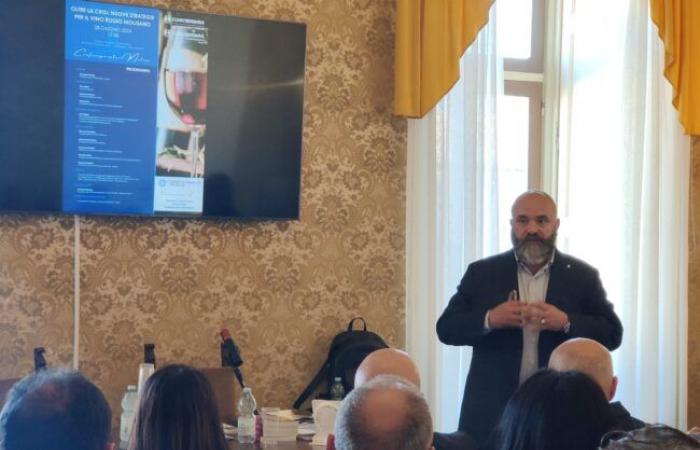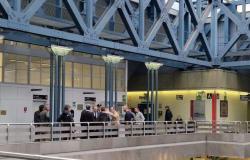TERMOLI – On Saturday 28 June, in Termoli, at the Casa Museo Stephanus, thanks to the collaboration between the Confcooperative Molise Service Centre and the Molise Wow cooperative, chaired by Oscar Vetta, the round table entitled “Beyond the crisis: new strategies for Molise red wine” took place. The participants included social wineries (6 out of 10 glasses that reach our tables are cooperative), private wineries (Di Majo Norante, but also Borgo di Colloredo, di Remo, Di Vito, Giagnacovo, Catabbo, Cipressi), representatives of institutions, professional organisations, various winemakers, representatives of GAL and the three food districts recognised by the Region (Wine, oil and honey).
Special guest Luca Rigotti, president of the Cantina Cooperativa Mezzacorona (over 280 million in turnover), president of the Wine Group of Copa Cogeca (the most important organization representing the agricultural and agri-food world in Europe) and coordinator of the National Table of the Wine Supply Chain composed of the Alliance of Agri-food Cooperatives, Assoenologi, Cia Agricoltori Italiani, Confagricoltura, Copagri, Federdoc, Federvini and Unione Italiana Vini). A prestigious, authoritative and by no means predictable audience, who listened and participated in the Round Table that was opened by the President of the Chamber of Commerce of Molise, Paolo Spina, who offered the debate an analytical and interesting numerical representation of the economy of Molise.
Then the floor was given to Luca Rigotti who described with punctuality and competence the Italian and European situation of the wine sector and, upon explicit request, also described in great detail the Mezzacorona model. The debate that followed, with the reflections of Giovanni Di Matteo (vice president of Cantina Cliternia), Adamantonio Flocco (president of Cantina San Zenone), Claudio Cipressi (vice president of the Consortium for the Protection of Tintilia), Gabriele Di Biasio (President of the Wine Tourism Movement), enriched by the reflections of Adamo Spagnoletti, vice president of Coldiretti Molise, contributed to outlining the picture of the regional sector that does not differ, as was easily imaginable, from the more general conditions of the entire national territory.
The conclusions were entrusted to PierLuigi Milone, head of technical assistance for the Rural Development Plan of the Molise Region. A disruptive intervention, in some ways, but very much focused on a rigidly pragmatic approach to the issues discussed. Milone has repeatedly highlighted, in essence, that the “future of the Molise wine industry, but also of regional agriculture more generally” does not pass through an intensification of public aid to the sector. It is a system no longer adequate to face the challenges of the future. The idea represented by Milone is that of a sector that knows how to unite, work together, safeguarding and strengthening individual identities, but socializing the difficulties, costs, promotion, assistance.
Milone’s seemed like a real hymn to cooperation. “Seeing the most important wineries in Molise, which together represent an important cross-section of the regional economy, agricultural and otherwise, gathered to discuss the problems of the sector and possible solutions, is a step that we are extraordinarily satisfied with” said Riccardo Terriaca, President of Confcooperative Molise who promoted and organized the event “The reasoning that has been developed, relating to production choices that will have to increasingly move towards sustainability, as well as, instead, on the market propose a new narrative of wine for moderate and conscious consumption and, finally, the invitation addressed to the European institutions to reflect carefully on the choice of uprooting and, at the same time, instead, to examine the block for a certain period of new production plants, are elements around which it is possible to build a sector strategy”, said Terriaca.






